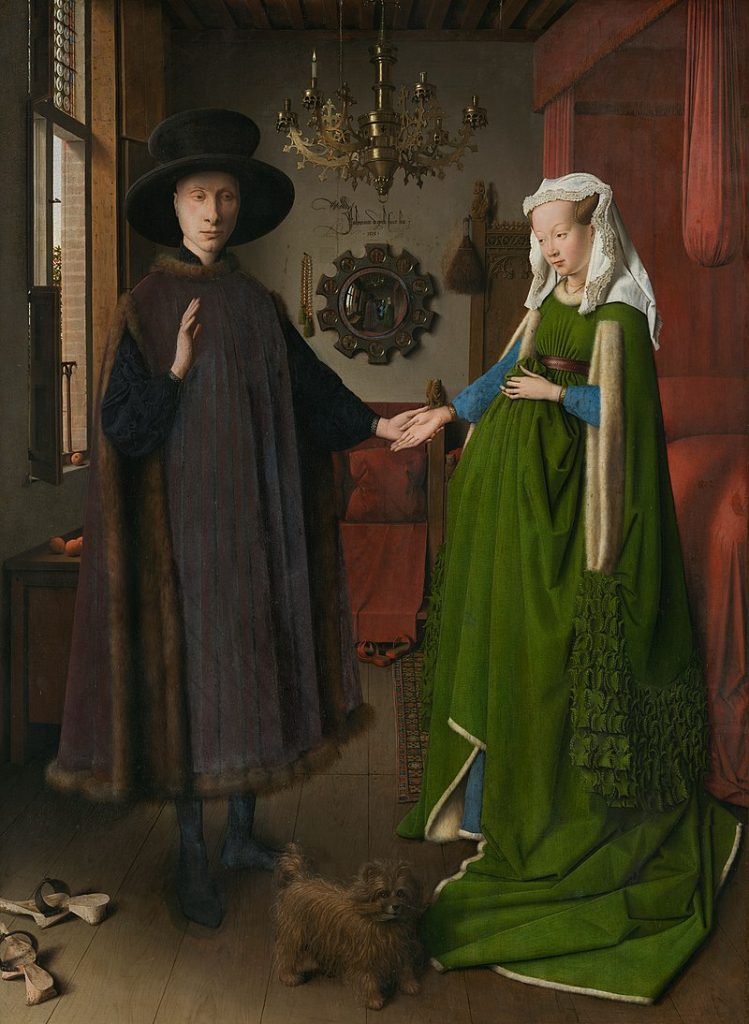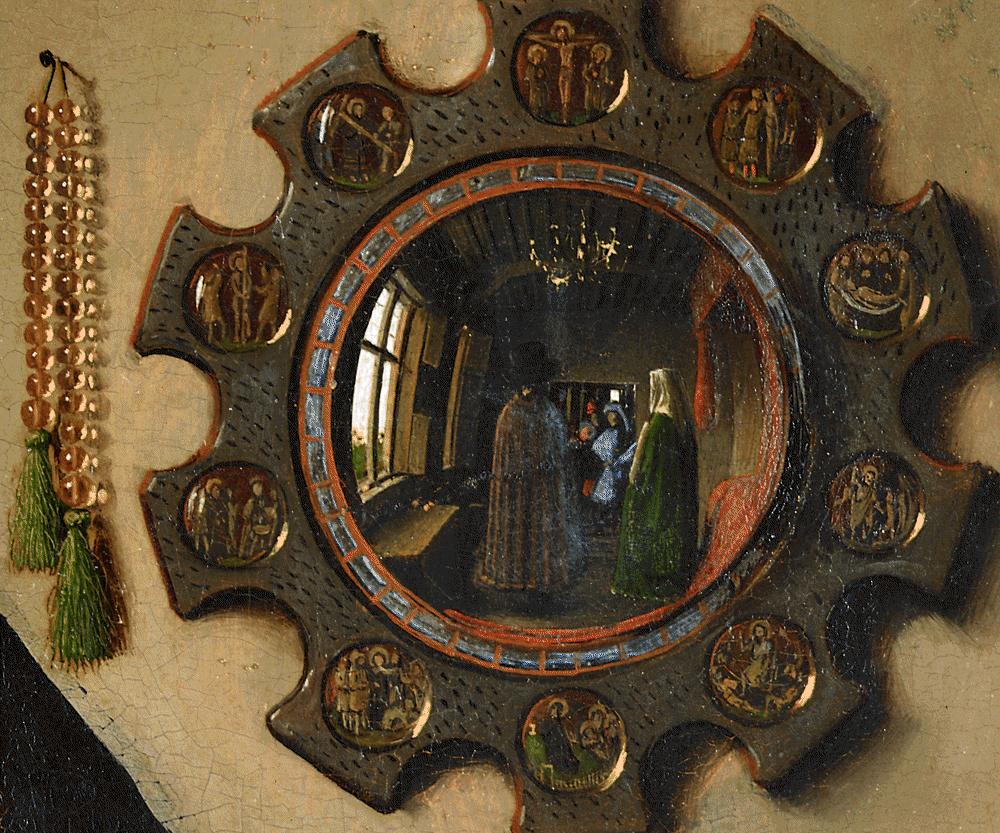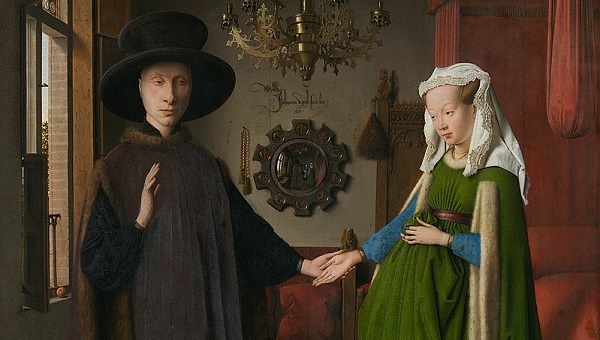The Arnolfini Portrait is the most celebrated and debated portrait due to its ambiguity. The painting is precise, but the intent of the painting is not apparent, and many questions arise because of the signature of the artist and the way he put things in a composition. The Arnolfini Portrait (1434) by Jan Van Eyck’s (c. 1390-1441) signature work set a standard for realistic oil portraiture before Da Vinci’s period (c. 1452-1519). Jan Van Eyck’s work, the Ghent Altarpiece, is known as the turning point of Western Art from the Middle Ages to the Renaissance, set an effort of meticulously detailed compositions.
Why Van Eyck signed in the middle of the portrait is enduring debate in Art history, and some scholars argue this painting was a witness to the marriage ceremony of Giovanni Arnolfini and Giovanna Cenami; that’s why Van Eyck signed as ‘Jan van Eyck was here’ jus in the top of bride-groom. In this painting, many objects are depicted by the artists; most of them are imported from outside the flemish world. The most astonishing element of this painting is the ‘Mirror’, which is set in the back of the room and shows little doubt of Jan’s sight as one of the two figures glances in the mirror of the Arnolfini Portrait. In that tiny, unnoticed convex mirror with a small set of medallions, Van Eyck depicts the Passion of Christ and blurred figures of the people. Why does this mirror matter? In this painting, Van Eyck portrays the wedding witnesses in that mirror as reflections.

This painting, by Van Eyck, depicts the Italian Merchant Giovanni di Nicolao Arnolfini when wealthy businesspeople started to give commissioned works. The work is narrated by two people in their home interior location with many things, warm light and sufficient ornaments indicating the richness of the people. According to Panofsky, ‘they do not look at each other yet seem to be united by a mysterious bond, and the solemnity of the scene is emphasized by the exact symmetry of the composition, a central vertical connecting the chandelier with the mirror on the wall and the little griffon terrier in the centre of the foreground.’ Some historians argue that it is instead a memorial portrait for the wife of Giovanni di Nicolao Arnolfini, who had died a year before the painting’s signature.
In this portrait, the couples bring attention to their marriage oath, which is compelled by canon law; joining hands is the implied action for the Christian oath to show their bond to society. The witness is significant in the marriage ceremony; the artist’s signature is portrayed as a witness of their wedding in this painting. This is where the convex mirror gets the audience’s attention.

The mirror is small and unnoticed due to the abundance of things in that room. According to Noah Charney, ‘Portraitists often looked at their subjects through a mirror rather than face them directly as they painted. The mirror’s edges provided a frame for the subject’s image. The mirror served to transfer the three-dimensional reality of the subject onto a two-dimensional surface, mimicking the efforts of the artist to paint the sitter onto a flat canvas or panel while giving the painted image the illusion of depth. Convex mirrors feature prominently in van Eyck’s work, most famously in The Arnolfini Wedding Portrait’.
Through that convex mirror, Van Eyck brings as many clues to the reality of portraits. Some people are reflecting in that mirror, including the artists. This reflection so much matters in this painting because the people who witnessed this marriage bring some significance. ‘The shadowy reflection of two or more figures in the gleaming shield of the soldier in purple. It is one thing for Jan van Eyck to include reflected observers within a private portrait (Arnolfini), writes Alfred Acres.
Van Eyck is a painter of meticulous elements of objects and ambience that he depicts in his painting. There are many things behind the couple’s figures, and the mirror is prominent. These magnificent mirrors bring the people outside the artwork into the artwork. They are not part of the wedding or portrait, but we see them in a glance of presence. The mirror is engulfed with scenes of the passion of Jesus Christ, in the centre portion depicting the people from the artist’s choice. In this painting, accessories tell more stories than reality; they resonate with something hidden.

Krispin Joseph PX, a poet and journalist, completed an MFA in art history and visual studies at the University of Hyderabad.





